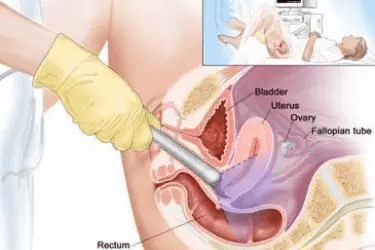Hysterosalpingography
Hysterosalpinography, also abbreviated as HSG, is a radiologic procedure that is done to evaluate the shape of the uterus and fallopian tubes.
It is an X-ray dye test that healthcare providers perform to diagnose fertility problems due to blocked fallopian tubes.
An HSG is done by your doctor to check if the fallopian tubes are open or blocked. This helps healthcare providers assess the causes of infertility or recurrent miscarriages in women.
Trouble getting pregnant and a blocked fallopian tube are signs that a woman has blocked fallopian tubes, whereas an open fallopian tube provides a clear path for conception to occur.

Why is it done?
There are various reasons for the radiologic procedure known as HSG. Let’s discover some of them:
- Fallopian tube evaluation
Hysterosalpingography is done to see if the fallopian tubes are blocked or open. Because a blocked fallopian tube can prevent an egg from moving into a fallopian tube and lead to infertility. - Fertility Investigation
This procedure is done to investigate the issues within the reproductive system that are leading to infertility among many women. - Uterine Assessment
This procedure is done by an OB-GYN to look at the shape and structure of the uterus and also detect any abnormalities inside the uterus, such as polyps, fibroids, and congenital diseases.
When and Who Needs Hysterosalphingography?
Hysterosalpingography (HSG) is a diagnostic procedure that is typically recommended for women who are experiencing certain reproductive health issues.
Individuals who may need this procedure include:
- Couples struggling with infertility
- Evaluation of uterine abnormalities
- Women with irregular menstrual cycles
- Post-tubal ligation reversal

What happens during the test?
An HSG is a safe procedure, but it can feel a bit uncomfortable for some people. It only takes 15 to 20 minutes to complete the process.
In this test, you have to lie down as you would during a pelvic examination. After this, the doctor will proceed to insert a speculum into your vagina to access the cervix and clean it.
Cleaning the cervix reduces the risk of infection. During this medical process, your doctor will inject a solution with dye into your uterus and the tubes. It is done to take real-time images of the internal organs, as the material is visible on X-rays and outlines the uterus.
After the images have been taken, the contrast material is removed, and then patients will be prescribed any appropriate medications for pain or infection prevention.
What to expect after the procedure?
After the test, your doctor will discuss your results of HSG and, according to them, recommend further tests or treatments to address any identified issues.
You may experience cramps similar to those during the menstrual cycle. You can also feel or experience vaginal discharge or bleeding.
You can contact your doctor if you are experiencing:
- Fever
- Severe pain and discomfort
- Heavy vaginal bleeding
- Nausea and vomiting
- Foul-smelling vaginal discharge

Get Painless Hysterosalpingography by Dr. Disha Verman
Take control of your reproductive health by consulting Dr. Disha Verman, the best gynaecologist and obstetrician in Mathura, Uttar Pradesh.
From providing comprehensive care to discussing fertility and family planning, Dr. Disha can help you achieve your reproductive goals.

Dr Disha Verman
Contact us
Make an Appointment
Contact
+ 91 9760070333
Location
Verman Hospital,Sadar Road,Mathura,281001
